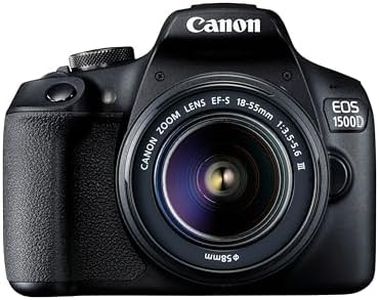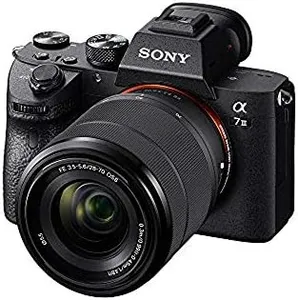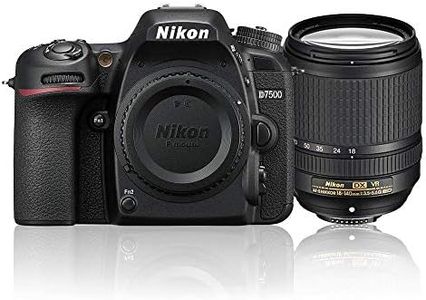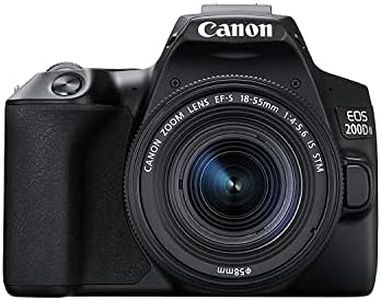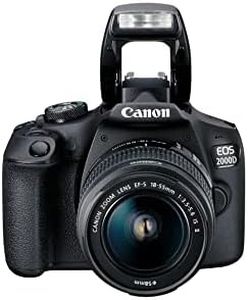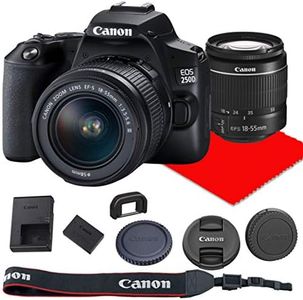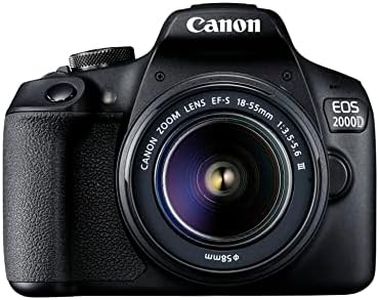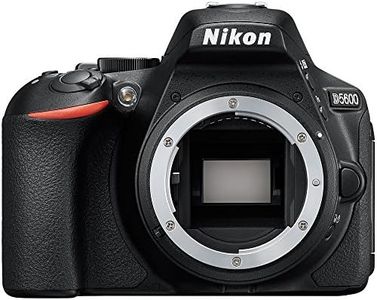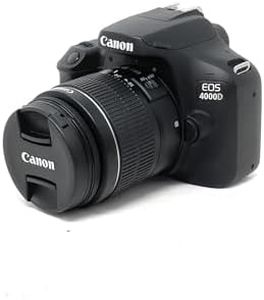We Use CookiesWe use cookies to enhance the security, performance,
functionality and for analytical and promotional activities. By continuing to browse this site you
are agreeing to our privacy policy
10 Best Affordable Dslr Cameras
From leading brands and best sellers available on the web.Buying Guide for the Best Affordable Dslr Cameras
Choosing an affordable DSLR camera can feel overwhelming, especially with so many options out there. The best approach is to think about what you want to use the camera for, such as general photography, travel, portraits, or even video. Understanding the key features of a DSLR will help you make a choice that fits your needs, so you get a camera that's not only within your budget but also enjoyable to use as you grow your skills.Sensor SizeThe sensor is the main part of the camera that captures the image. Two main types in affordable DSLRs are APS-C and, less commonly, full-frame sensors. APS-C sensors are smaller and generally found in entry-level and mid-range DSLRs. Larger sensors allow for better low-light performance and more background blur, but APS-C is great for beginners as they’re lighter and more affordable. If you plan on taking lots of photos in low light or want the most professional look, a larger sensor is better, but for most people starting out, APS-C is more than enough.
MegapixelsMegapixels tell you how many millions of dots make up each image. More megapixels give you larger, sharper images, which is helpful if you want to print big photos or crop them a lot. Most affordable DSLRs have between 18 and 24 megapixels. For sharing photos online or printing standard-sized pictures, you don't need to chase the highest number—anything above 16 megapixels is usually plenty, so consider other features too.
Autofocus SystemAutofocus is how quickly and accurately the camera focuses on your subject. DSLRs have different numbers of autofocus points, which are like little zones the camera uses to lock onto what you're shooting. More points mean the camera can focus more precisely, especially for moving subjects. If you plan to take photos of fast action, like sports or pets, look for more autofocus points. For slower-paced subjects, a basic system will be fine.
Continuous Shooting Speed (Frames Per Second)This spec tells you how many photos the camera can take in a row per second when you hold down the shutter. If you often take photos of movement—like sports, kids, or wildlife—a higher number helps you catch the perfect moment. Most entry-level cameras offer between 3 and 6 frames per second. For everyday use, even the lower end of this range is usually enough.
ISO RangeISO measures how sensitive the camera sensor is to light. A wider ISO range means the camera can perform better in dim conditions without a flash. If you plan to shoot indoors or at night, look for a camera that offers higher ISO settings, but keep in mind, higher ISO can sometimes add grain or noise to your photos. For bright outdoor shots, almost any ISO range will work.
Screen Type and ArticulationAffordable DSLRs offer different types of screens: some are fixed, while others can tilt or flip out (articulated). Articulated screens make it easier to shoot photos or videos from tricky angles, such as very low or high perspectives, or to take selfies. If versatility matters to you, or you want to try shooting video, look for a camera with an articulated screen.
Video CapabilitiesMany affordable DSLRs also shoot video, with varying resolutions such as Full HD (1080p) or sometimes even 4K. If video is important to you, check what the camera offers, like microphone inputs, autofocus while recording, and frame rates. For basic video needs, Full HD is usually enough, but if you want higher detail and plan to edit your videos, look for higher specs.
Connectivity OptionsThis refers to how the camera connects to other devices, such as smartphones or computers. Features like Wi-Fi, Bluetooth, and NFC let you quickly transfer photos or control the camera remotely from your phone. If you want to share images quickly or back them up easily, go for a camera with built-in connectivity features.
Lens CompatibilityDSLRs use interchangeable lenses, so it's important to check what lenses are easily available and affordable for the camera you pick. Some brands have more lens choices than others. If you want to try different types of photography, like wide landscapes or close-up nature shots, make sure the camera you choose has a good range of compatible lenses.
